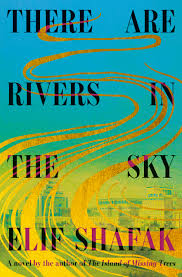O: ARTHUR: By the River Thames, 1857–8
byArthur begins his journey at the British Museum in 1857–58, stepping into a new chapter of his life with both excitement and apprehension. He is introduced to the Keeper of Oriental Antiquities and his assistant, Edward, who represents everything Arthur feels he lacks—refinement, education, and a well-to-do background. Edward’s poised demeanor and physical fitness, along with his well-tailored clothes, stand in stark contrast to Arthur’s self-perceived shortcomings. Arthur’s lack of formal education and his unkempt appearance make him feel like an outsider, but despite this, he is determined to make a name for himself in this prestigious institution.
At the museum, Arthur faces an enormous task that would overwhelm anyone: the examination and organization of over thirty-five thousand Mesopotamian clay tablets, many of which are damaged or fragmented. Despite doubts about his ability to manage such a monumental responsibility, Arthur continues to tackle the job each day, finding a sense of purpose and order amidst the chaos. His fascination with the ancient artifacts grows, and as he pieces together the fragments, each discovery feels like a personal victory, drawing him deeper into the ancient world and its mysteries. This task becomes more than just labor for Arthur—it evolves into a deeply personal mission to uncover the stories of the people who lived thousands of years ago.
As Arthur delves further into the tablets, he begins to identify with the people who wrote them. He starts imagining their lives, their struggles, and their emotions, realizing that the inscriptions on the clay tablets are not merely transactional records but also expressions of human experience. Arthur finds humor, frustration, and even profound insight within the ancient scribblings. With each tablet he deciphers, Arthur feels a closer connection to the past, understanding that the emotions and experiences of ancient civilizations are strikingly similar to his own, despite the vast passage of time.
In parallel with his personal growth, the British Museum undergoes a transformation. What once appeared as a chaotic collection of relics is gradually becoming a more structured and academically focused institution. This shift mirrors Arthur’s own journey, as he finds his place within this newly evolving field of Mesopotamian studies. Unlike other fields of academia, Arthur discovers that there is no rigid hierarchy in his field, allowing for a rare opportunity to contribute freely and grow in his knowledge and understanding without the constraints that might stifle creativity in other disciplines.
While his professional life begins to stabilize, Arthur’s personal life remains turbulent. As he deals with eviction notices and overcrowded living conditions, he becomes more disheveled, both physically and emotionally. His family’s struggles weigh heavily on him, with his father’s ongoing issues with alcohol and his mother’s declining health creating an overwhelming sense of despair. Arthur feels as though he is trapped between his aspirations and the realities of his personal life, but he remains committed to his work at the museum, hoping that it will lead him to a brighter future.
In the midst of these personal challenges, Arthur makes a remarkable discovery that reignites his passion for his work. He uncovers a tablet that hints at the existence of ancient poetry, a finding that adds a layer of beauty and significance to the everyday records he has been studying. This discovery not only sparks his excitement but also secures him a permanent position at the museum, offering him a sense of stability and purpose. Arthur’s newfound sense of dedication to preserving the stories of the past becomes the cornerstone of his professional life, and through his efforts, he hopes to leave a lasting legacy, much like the River Thames itself, which flows through history, unbroken and constant. In his work, Arthur finds not just a career but a mission to preserve the forgotten voices of the ancient world.

